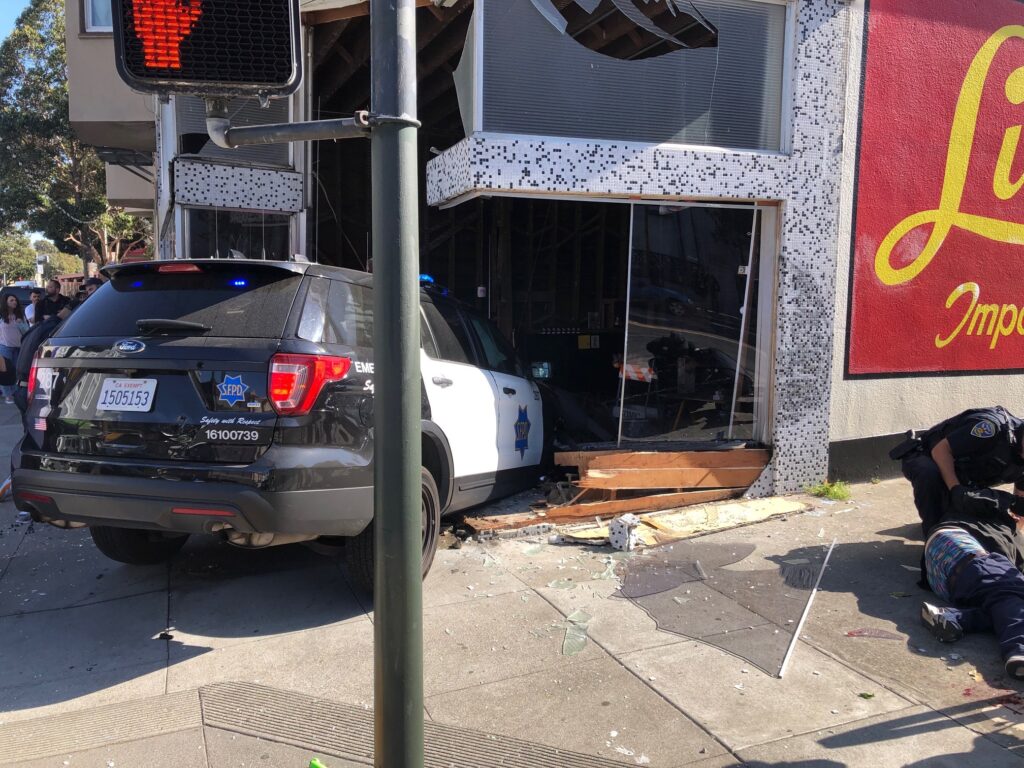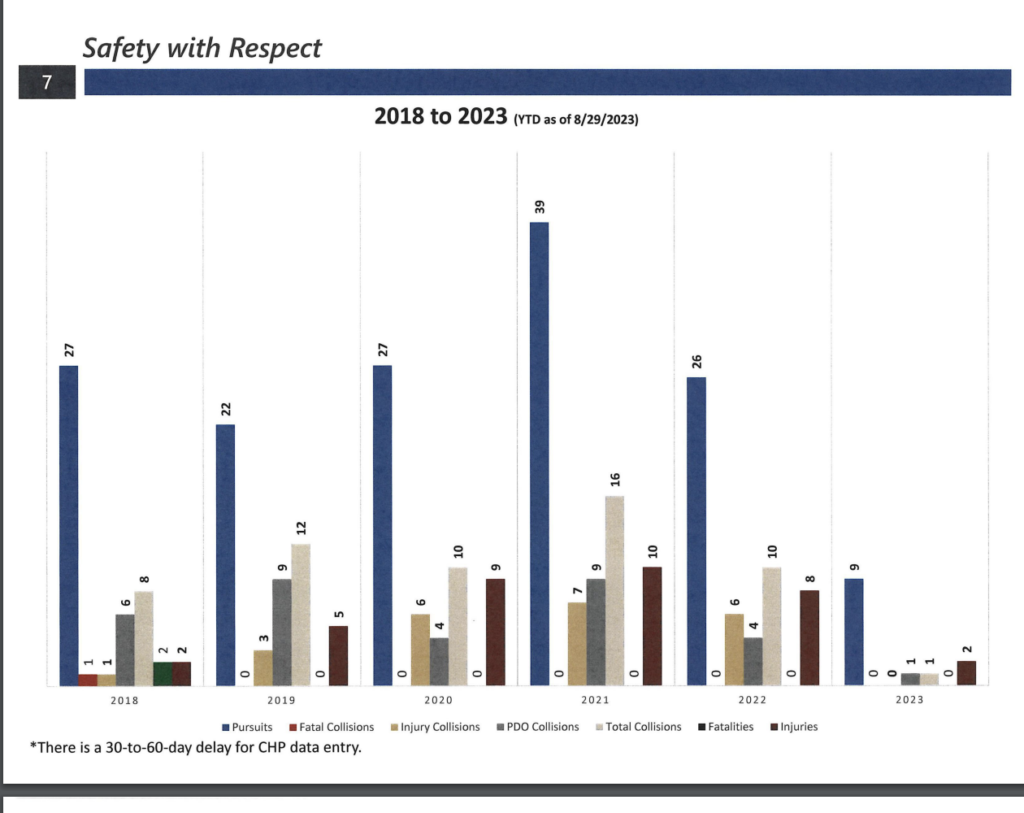Sup. Matt Dorsey no longer supports his own police-staffing measure, so it comes back to the Rules Committee with Sup. Ahsha Safai as the new sponsor.
Safai and Sup. Shamann Walton took the measure apart last week, showing how setting aside as much as $300 million more for the cops would actually threaten public safety.
Safai added what seemed like a very reasonable amendment: The cops can get the extra money when the supes and the mayor figure out, either by shifting around existing tax money or finding new revenue sources, how exactly to pay for it.

This is going to be a reality for the next few years anyway: The city’s existing revenue sources, which rely a lot on property taxes and sales taxes from downtown, are going to drop, maybe by a lot. The supes and the mayor will have to either accept massive cuts in almost all public services, including the police, or find new ways to bring in money.
But Dorsey said that amendment would gut his measure, and the tough-on-crime crowd has organized to spin this as the supes “demanding higher taxes for basic police services.”
That’s not what the amendment does: The Police Department is only one part of the public safety system, and if all the money that’s available goes to more cops, there won’t be enough people to answer the 911 calls, or staff the emergency room at SF General, or handle mental-health crises, or manage the jails, where lots more inmates are crowding into limited space with limited sheriff’s deputies to monitor them (much less to provide the kinds of services and education that has made this city a model for avoiding recidivism).
It says: Yes, let’s hire more cops—but let’s also find a way to pay for all of this without prioritizing one part of the system over another.
Progressives over the past few years have faced the challenge of funding programs like affordable housing and homelessness prevention, and have responded by putting on the ballot, and winning, measures to raise taxes on the rich to pay for those things.
The mayor has sometimes refused to spend that money, but the left hasn’t been saying: Give us this, but take money from something else to do that.
Breed and the Chron complain about “progressives” all the time, but it seems at this point as if that’s the group being fiscally responsible.
At any rate, the amended measure will be back at the Rules Committee Monday/6, where it’s almost certain to get two votes (Safai and Walton). It will then go to the full board, where it’s likely to get six votes.
But Dorsey and Breed will no doubt use this to try to attack the progressive supes as anti-cop (and of course, Safai, who is running for mayor, will be linked with the “progressives” on this, although he’s one of the more conservative supervisors.
That meeting begins at 10:30.
The news media got all excited in August when someone broke into a car in Alamo Square with a cop right nearby, not appearing to give chase. Turns out that wasn’t exactly the case—the officer did pursue the alleged thief, who dropped all the stolen goods and escaped.
But Breed and others have used this, and the inaccurate social-media viral footage, for political advantage. The mayor (who, by the way, appoints a majority of the Police Commission and hires and fires the chief) now wants a ballot measure making it easier for cops to engage in vehicle pursuits in the city.
The Department of Police Accountability did a study on this, which DPA will present to the Police Commission Wednesday/8.
In many, big, crowded cities like San Francisco, the cops are very limited in when they can get involved in what are often high-speed vehicle chases, which also sometimes end in injuries or fatalities.
In 2021, the SF cops engaged in 39 vehicle pursuits, which led to 16 collisions and 10 injuries. Lat year, 26 pursuits, 10 collisions, 8 injuries.

Those are relatively low numbers, since city policy limits the use of police pursuits. The national numbers are a bit more grim: In 2020, 532 people died as a result of police vehicle pursuits; only three were officers. Between 1979 and 2013, more than 5,000 bystanders and passengers were killed by cops driving fast in populated areas, and tense of thousands more were injured.
Here’s what the Boston Police Department says:
Generally, pursuit driving is not justified and is prohibited unless the occupants of the vehicle are known to be wanted for the commission or the attempted commission of a violent or life-threatening felony or the vehicle is being operated in an erratic or dangerous manner which poses a threat of harm to the public if it is not stopped. The commission of any motor vehicle violation and/or operating a stolen motor vehicle, in themselves, are not sufficient to meet the above criteria. … The City of Boston is a highly congested urban area which generally precludes pursuit driving in a safe manner. Therefore, every effort shall be made to prevent a suspect vehicle from escalating a situation into one which requires a pursuit. Pursuit driving is only permitted in situations that represent a threat of harm to the public or the officers, if the suspect vehicle and/or occupants are not apprehended. The Department recognizes that it is better to allow a suspect to escape than to engage in a pursuit under conditions that unnecessarily jeopardize the safety of the public and the officer(s).
San Francisco has a similar policy:
Vehicle pursuits are authorized if a fleeing person is suspected of a violent felony or when there is a reasonable belief that the person needs to be immediately apprehended because of the risk to public safety.
In other words: Somebody broke a car window and stole a laptop—but that’s not grounds to enter a high-speed chase in Alamo Square that quite possibly will wind up with people who had no involvement in any part of the incident injured or dead.
I have personally witnessed high-speed chases that wound up with crashes and injuries.
I don’t think the Police Commission will weigh in on the mayor’s ballot measure, but since the panel has been remarkably willing to challenge her and her department’s policies, we might get some good discussion.
That meeting starts at 5:30pm.
We’re all pretty clear that post-Covid downtown San Francisco is a mess. Some of us are politely suggesting that generations of mayors who pursued finance, insurance, real estate and tech as the economic salvation of the city, destroying economic diversity, a thriving arts community and blue-collar jobs in Soma in the process, set the city up for a failure.
But that was then, and this is now, and we have a serious crisis, since nobody with any sense thinks that the traditional office workday is ever coming back.
So what do we do with all that space?
On Tuesday/7, houseless and formally houseless people will offer a suggestion: Give just one of those empty buildings to a “homefullness project.”
Thousands of buildings stand vacant while thousands of us houseless San Franciscan residents continue to be swept like we are trash, face ongoing harassment, incarceration or death. This is an opportunity of hope and life for San Francisco, said Tiny Gray-Garcia, formerly houseless/incarcerated Poet, co-founder of POOR Magazine, visionary of Homefulness and author of Criminal of Poverty Growing up Homeless in America.
(Tiny writes at times for 48hills.)
The press conference on the steps of City Hall is co-sponsored by The Coalition on Homelessness, Idriss Stelley Foundation, Anti-PoLice Terror Project, The Western Regional Advocacy Project (WRAP) Krip Hop Nation, San Francisco Bay View Newspaper, and the Race and Equity in All Planning Coalition.
It’s an idea I’ve long thought makes sense: Let artists and unhouse people take over some of that vacant space and make it their own. These are not old warehouses in Soma in the 1980s taken over by artists that were potential fire traps; the empty downtown buildings all built to the highest codes, with smoke alarms, sprinklers, high-end electrical systems, seismic safety, and emergency exits.
The press conference starts at 10:30am.
Then on Thursday/9, the Planning Commission will hold a hearing on the mayor’s plans for the future of downtown, which are pretty vague. Breed talks about plans to “Transform Downtown into a leading arts, culture, and nightlife destination,” but offers no specifics for how arts, culture, and nightlife, which above all else need cheap rent, are going to afford places where landlords—mostly giant corporations, many based out of town—are still demanding the kinds of rents they got before the pandemic.
That space is going to remain empty unless the city takes over some of the leases (at a fraction of their value) or we wait until things fall apart so badly that the landlords will essentially abandon their buildings.
The Planning Commission meeting starts at 12pm.




